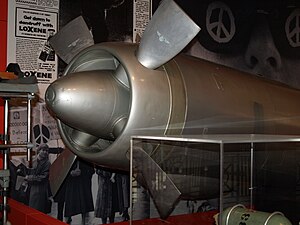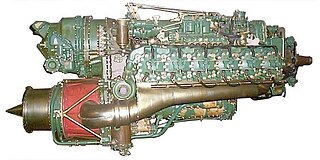
The Napier Nomad is a British diesel aircraft engine designed and built by Napier & Son in 1949. They combined a piston engine with a turbine to recover energy from the exhaust and thereby improve fuel economy. Two versions were tested, the complex Nomad I which used two propellers, each driven by the mechanically independent stages, and the Nomad II, using the turbo-compound principle, coupled the two parts to drive a single propeller. The Nomad II had the lowest specific fuel consumption figures seen up to that time. Despite this the Nomad project was cancelled in 1955 having spent £5.1 million on development, as most interest had passed to turboprop designs.

The Rolls-Royce RB.53 Dart is a turboprop engine designed and manufactured by Rolls-Royce Limited. First run in 1946, it powered the Vickers Viscount on its maiden flight in 1948. A flight on July 29 of that year, which carried 14 paying passengers between Northolt and Paris–Le Bourget Airport in a Dart-powered Viscount, was the first regularly scheduled airline flight by a turbine-powered aircraft. The Viscount became the first turboprop powered aircraft to enter airline service with British European Airways (BEA) in 1953.

The Armstrong Siddeley Double Mamba is a turboprop engine design developed in the late 1940s of around 3,000–4,000 hp (2,200–3,000 kW). It was used mostly on the Fairey Gannet anti-submarine aircraft developed for the Fleet Air Arm of the Royal Navy.

The Armstrong Siddeley Mamba was a British turboprop engine produced by Armstrong Siddeley in the late 1940s and 1950s, producing around 1,500 effective horsepower (1,100 kW).
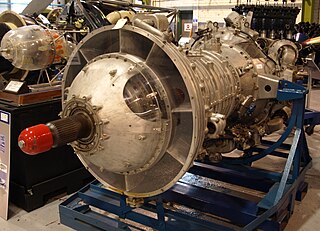
The Rolls-Royce RB.39 Clyde was Rolls-Royce's first purpose-designed turboprop engine and the first turboprop engine to pass its civil and military type-tests.

The Wright J65 was an axial-flow turbojet engine produced by Curtiss-Wright under license from Armstrong Siddeley. A development of the Sapphire, the J65 powered a number of US designs.

The Napier Gazelle is a turboshaft helicopter engine that was manufactured by D. Napier & Son in the mid-1950s. In 1961 production was nominally transferred to a joint venture with Rolls-Royce called Napier Aero Engines Limited. But the venture closed two years later.

The Armstrong Siddeley ASX was an early axial flow jet engine built by Armstrong Siddeley that first ran in April 1943. Only a single prototype was constructed, and it was never put into production. A turboprop version as the ASP was somewhat more successful, and as the Armstrong Siddeley Python saw use in the Westland Wyvern.

The Bristol Orion aero engine was a two-shaft turboprop intended for use in later marks of the Bristol Britannia and the Canadair CL-44. Although the engine was built and underwent a development program, the BE.25 Orion project was cancelled in 1958 by the British Ministry of Supply in favour of the Rolls-Royce Tyne. In addition, interest in turboprop-powered aircraft was beginning to wane, because of the successful introduction of the Boeing 707 and Douglas DC-8 jetliners into airline service.
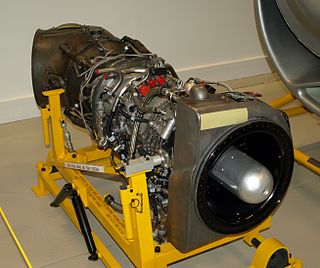
The Rolls-Royce Gnome is a British turboshaft engine originally developed by the de Havilland Engine Company as a licence-built General Electric T58, an American mid-1950s design. The Gnome came to Rolls-Royce after their takeover of Bristol Siddeley in 1968, Bristol having absorbed de Havilland Engines Limited in 1961.
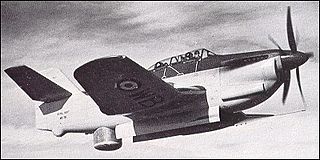
The Blackburn B-54 and B-88 were prototype carrier-borne anti-submarine warfare aircraft of the immediate post-Second World War era developed for the Royal Navy's Fleet Air Arm (FAA). They shared a conventional monoplane design with a mid-mounted inverted-gull wing and tricycle undercarriage. The pilot and observer sat in tandem under a long canopy atop the fuselage. The B-54 had a piston engine while the B-88 had a gas turbine driving large contra-rotating propellers. The radar scanner was mounted in a retractable radome in the rear fuselage, behind a long internal weapons bay. The program was cancelled in favour of the Fairey Gannet aircraft.

The Rolls-Royce Gem is a turboshaft engine developed specifically for the Westland Lynx helicopter in the 1970s. The design started off at de Havilland and was passed to Bristol Siddeley as the BS.360. When Rolls-Royce bought out the latter in 1966, it became the RS.360.

The Armstrong Siddeley Python was an early British turboprop engine designed and built by the Armstrong Siddeley company in the mid-1940s. Its main use was in the Westland Wyvern, a carrier-based heavy fighter. The prototypes had used the Rolls-Royce Eagle piston engine, but Pythons were used in production aircraft. In this application, the Python was rated at 4,110 equivalent shaft horsepower (eshp).

The Armstrong Siddeley ASA.1 Adder was an early British turbojet engine developed by the Armstrong Siddeley company and first run in November 1948.
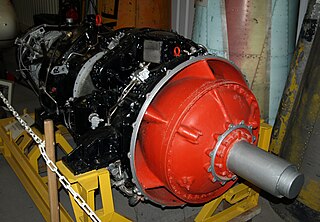
The Napier Eland was a British turboshaft or turboprop gas-turbine engine built by Napier & Son in the early 1950s. Production of the Eland ceased in 1961 when the Napier company was taken over by Rolls-Royce.

The Allison T40, company designation Allison Model 500, was an early American turboprop engine composed of two Allison T38 power sections driving a contra-rotating propeller via a common gearbox.

The Honeywell T55 is a turboshaft engine used on American helicopters and fixed-wing aircraft since the 1950s, and in unlimited hydroplanes since the 1980s. Today, there have been more than 6,000 of these engines built. It is produced by Honeywell Aerospace, a division of Honeywell based in Phoenix, Arizona, and was originally designed by the Turbine Engine Division of Lycoming Engines in Stratford, Connecticut, as a scaled-up version of the smaller Lycoming T53. Both engines are now produced by Honeywell Aerospace, and the T55 serves as the engine on several major applications including the CH-47-Chinook, the Bell 309, and the Piper PA-48 Enforcer. The T55 also serves as the core of the Lycoming ALF 502 turbofan. Since the T55 was first developed, progressive increases in airflow, overall pressure ratio, and turbine inlet temperature have more than tripled the power output of the engine.

The General Electric T31 was the first turboprop engine designed and built in the United States.

The Fairey P.16 Prince was a British experimental 1,500 hp 16-cylinder H-type aircraft engine designed and built by Fairey in the late 1930s. The engine did not go into production.

The Rolls-Royce RB.141 Medway was a large low-bypass turbofan engine designed, manufactured and tested in prototype form by Rolls-Royce in the early-1960s. The project was cancelled due to changes in market requirements that also led to the development and production of the smaller but similar Rolls-Royce Spey, and the cancellation of the Armstrong Whitworth AW.681 military transport aircraft project.
